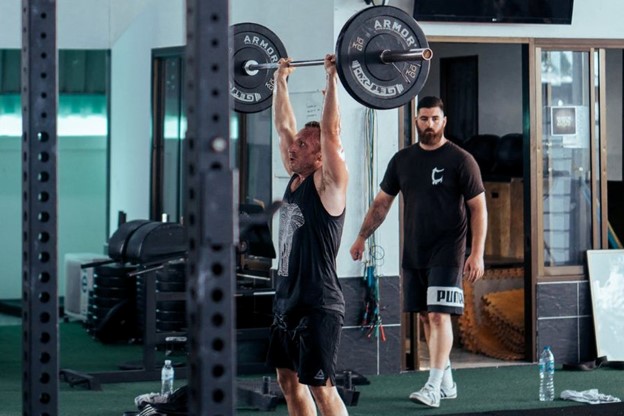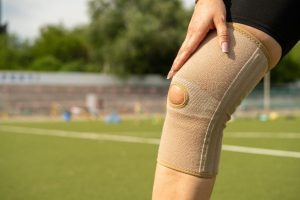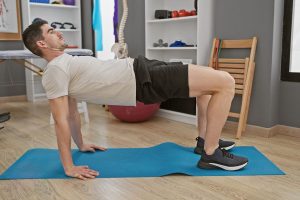Over the last 35 years in my practice, I’ve seen it many times: lifters who have many years of experience under their belt, but are currently struggling to shrug off injuries that would have been a minor annoyance in their 20’s. For lifters over 40, the question often changes from, “how much ya bench?” to “how can I bench without feeling like my shoulders are trying to exit my body?”
In this article, we’ll discuss some of the particular physiological changes you’ll experience, and I’ll try to address some of my top tips for folks who plan to continue lifting for years to come.
The changes that happen after 40
Many of us know that regular resistance training is one of the most beneficial activities we can partake in, especially as we age. However, lifting over 40 begins to present some added challenges.
As individuals age beyond 40, several physiological changes impact lifters that will necessitate a revised approach to training:
Natural loss of muscle tissue (sarcopenia)
Firstly, there’s a gradual decline in muscle mass over 40. Medically, this is termed sarcopenia, a condition by which we lose 3-8% of our muscle mass each decade for the remainder of our lives. This effect is, of course, accentuated in individuals who are taking no steps to counteract the effects of sarcopenia.
Naturally reduced bone density over time
It’s estimated that around 90% of our total bone content is built by the age of 20, and that starting around age 40, we begin to experience a natural decline in bone density over time. The good news is that this can be slowed significantly with proper exercise and nutrition.
Reduced flexibility and elasticity in the joints
One of the classic complaints of those of us over 40 is the feeling of “stiffness,” especially in the morning. This is because as we age, our joints may experience reduced flexibility and elasticity and we may suffer from adaptive shortening of our muscles.
There is less lubricating fluid in the joints, ligaments shorten over time, and cartilage becomes thinner.
Changes in metabolism
Furthermore, our resting metabolic rate tends to slow down after the age of 40, decelerating around 5% per decade. This makes weight management more challenging and emphasizes the importance of a balanced diet alongside strength training for overall health.
Hormonal changes
Lastly, hormonal changes, such as a decline in testosterone levels, can affect muscle recovery and growth, necessitating adjustments in workout intensity and recovery strategies.
The solution: continue resistance training!
The savvy readers have already figured out the answer: continuing to resistance train as we go into our 40’s and beyond is a direct answer to all of the above physiological changes.
Loss of muscle mass can be mitigated (or even reversed in newer lifters) by lifting with a focus on maintaining high-performing muscle mass. Bone health is directly affected by resistance training, and the natural mobility and flexibility of our joints is also directly maintained and improved by regularly taking our joints through a full range of motion in training.
Though trying to DIY a physical therapy program can yield questionable results, shying away from basic resistance training as it becomes a bit tougher to manage isn’t a great answer. Quite the opposite, in fact.
We just need to make some inevitable adjustments to our planning and auto-regulation strategies. Below, I’ll outline some of my top tips for lifters over 40:

Tips for the over 40 lifter
It’s tempting to think that after 40, regular PR’s get replaced with nagging injuries until we eventually quit. While it’s true that hammering your heavy barbell lifts and attempting to shrug off minor injuries likely won’t continue to serve you moving forward, it’s still absolutely possible to lift regularly and make progress:
Actually prioritize warm-ups
I say “actually” above because this is probably the most commonly blown-off element of most workouts. It doesn’t help that our 40’s and beyond are typically some of the times in our lives that we’re the busiest, and have less total time and energy to devote to fitness than we’ve ever had before. I get it.
However, one of the most reliable ways to dodge minor injuries is to properly warm up. Take the joints through their full range of motion using your modality of choice (strategic yoga positions can be great for this), and elevate the heart rate with a couple of minutes of jumping rope, treadmill, or jumping jacks.
Focus on joint mobility (full range of motion)
One of the primary benefits of lifting on our health is that it helps us maintain mobile and strong joints, especially in compromised or odd positions we find ourselves in during the course of our lives. Unfortunately, this benefit gets lost when we cut range of motion to chase numbers in the gym.
One of my top suggestions for someone who wants to continue to lift into their 40s, 50s, and 60s is to utilize the fullest possible range of motion that doesn’t compromise technique, even at the expense of weight on the bar.
This has a dual effect – in addition to helping us gain and maintain the basic mobility required to live healthy and pain-free lives, research has shown that the “stretched” portion of the lift is likely the most hypertrophic. As a lifter, that should be music to your ears!
Don’t be afraid of the basics
It’s easy to get married to our favorite lifts. I completely get that. That being said, there isn’t truly anything we can do in the gym that can’t be scaled down to be more joint friendly.
Consider this: research shows that bench press and push-ups result in comparable strength gains when similar levels of muscle activity are used.
Substituting weighted or non-weighted calisthenic exercises like push-ups, pull-ups, goblet squats, lunges, etc. for their barbell counterparts tends to leave older lifters feeling fresh, rather than beat up. It’s also a great way to get nagging pains under control.
If, for instance, you struggle with recurring back pain on squats and deadlifts, you’ll likely find that goblet squats and dumbbell or kettlebell stiff legged deadlifts don’t sideline you in the same way.
Learn to auto-regulate, if you haven’t already
As many of you probably know, auto-regulation is a fancy way of saying something you’ve heard your whole life: listen to your body!
I recommend taking exercises close to what we call “technical failure,” and not beyond. Technical failure is reached when we can no longer perform the exercise with good technique.
So, what this piece of advice really means is: continue doing repetitions until you think your form is going to break down within the next one or two repetitions, and then stop. It’s been shown that beyond this point, we’ve already gotten most of the hypertrophic benefits of the exercise, and continuing further would likely create a disproportionate amount of fatigue and open up unnecessary injury risk.
Choose exercises that your body handles well
As the old saying goes, “your mileage may vary.” Everyone’s body type, injury history, health status, athletic backgrounds, and preferences are different. There may be some exercises that my body handles very well that yours simply rejects, and vise versa.
Luckily, there are almost an infinite number of variations of each movement pattern that we can choose from.
Do you notice that your lower back aches from barbell rows? Switch to chest supported rows on a bench, or cable rows. Does the bench press aggravate one (or both) of your shoulders? Use a lighter weight and a closer grip, or switch to a machine press. Pull-ups aggravate your elbows? Try different grip attachments on the lat pull-down machine instead.
While this does require you to be your own guinea pig, it’s the mentality that’s important. At this stage of your life, you’re lifting to be healthy and pain-free. As such, exercises known to cause you pain should likely be discarded in favor of ones that don’t.
Experiment with frequency and volume
The last tip I’ll give is that we may have to adjust the frequency of our lifting sessions in order to continue to extract the benefits without putting ourselves into a recovery deficit.
Many lifters over the age of 40 report that when they switched to a two day per week schedule, a lot of nagging pains simply melt away.
If you’re someone who’s just itching to get into the gym after a few days, you may be able to maintain a higher frequency of gym visits by simply adjusting your split:
- Upper / Lower / Full puts you in the gym three days per week, with a two day per week frequency per muscle group.
- Upper / Lower / Upper / Lower puts you in the gym four days per week, with a two day per week frequency per muscle group.
- Full / Full puts you in the gym twice per week, with a two day per week frequency per muscle group.
These are just some of the options you could try, and there are many more options out there if you’re willing to get creative.
Don’t quit! The silver lining of lifting over 40
If you make the commitment to make the basic adjustments outlined above, it’s not unreasonable to expect multiple more decades of effective, functional training to come, and it’s worth it!
Continuing to lift after the age of 40 allows you to continue to receive all the benefits of regular resistance training, at a time in your life when they’re most important to receive!
Regular strength training has been shown to improve bone density, counteracting age-related bone loss and reducing the risk of osteoporosis. Lifting helps maintain and build lean muscle mass, which can contribute to better metabolic health, weight management, and overall physical function.
Beyond the physical advantages, lifting can play an important role in mental well-being, promoting stress relief and enhancing mood through the release of endorphins. Ultimately, lifting after 40 not only supports physical resilience but also contributes to a healthier and more fulfilling overall lifestyle.

















